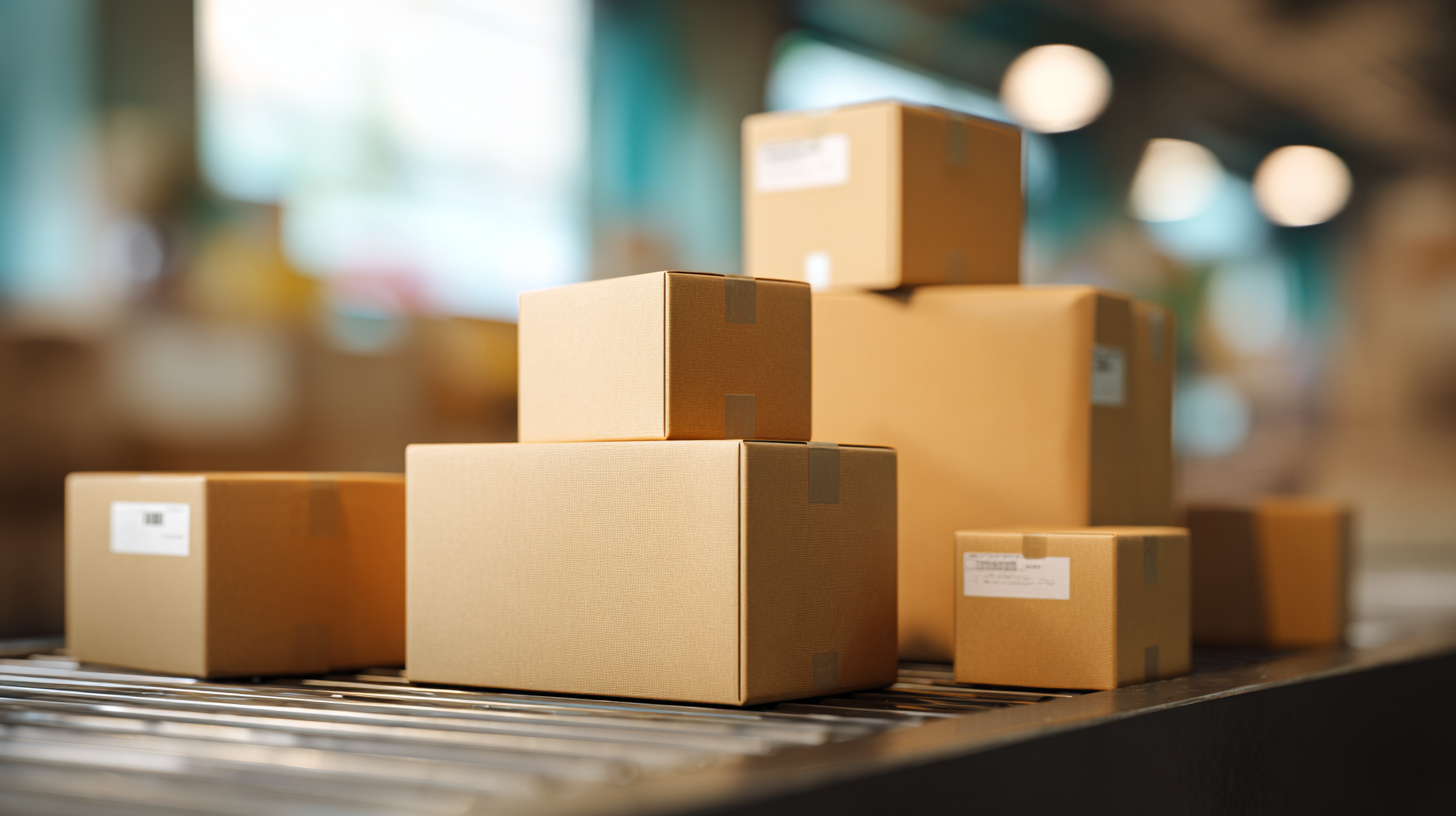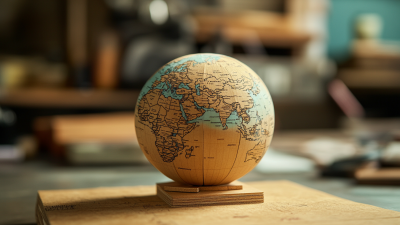ProMach is your partner from start to finish. Our product brands are grouped into distinct business lines that make the most sense to our customers, covering every function of the production line: Filling, Bottling & Capping, Decorative Labeling, Flexibles & Trays, Pharma, Handling & Sterilizing, Labeling & Coding, Robotics & End of Line, and Systems & Integration.
learn more2025 Top Packaging Solutions Trends Driving Industry Efficiency and Sustainability
As the global packaging industry continues to evolve, the focus on sustainability and efficiency is more critical than ever. According to the latest data from Smithers Pira, the global packaging market is projected to reach $1 trillion by 2025, with a growing demand for innovative Packaging Solutions that cater to both consumer preferences and environmental concerns. The shift towards sustainable practices is no longer just a trend; it has become an essential component of business strategy for many companies.

Incorporating advanced technologies, such as smart packaging and biodegradable materials, is paving the way for a more efficient and responsible approach to packaging. Reports indicate that nearly 60% of consumers prioritize sustainability in their purchasing decisions, further pushing brands to adopt eco-friendly Packaging Solutions. The next few years will see a significant transformation in how products are packaged and delivered, driven by innovations that enhance product longevity and reduce waste, ultimately contributing to a circular economy.
Exploring the top trends in Packaging Solutions for 2025 will provide valuable insights into how companies can stay ahead in this rapidly changing landscape. From increased use of automation to the incorporation of data analytics, these advancements not only promise to boost productivity but also ensure a reduced environmental footprint, aligning with the global push for sustainability in industrial practices.
Emerging Biodegradable Materials Transforming Packaging Practices
The packaging industry is experiencing a significant transformation driven by the emergence of biodegradable materials. These innovative materials, derived from natural sources, offer a sustainable alternative to traditional plastic packaging. As environmental concerns continue to escalate, businesses worldwide are prioritizing packaging solutions that not only reduce waste but also minimize carbon footprints. Biodegradable options enable products to break down more efficiently in landfills and composting environments, ultimately mitigating the long-term environmental impact associated with conventional packaging.
For instance, materials like polylactic acid (PLA) and polyhydroxyalkanoates (PHA) are gaining traction due to their compostability and minimal ecological footprint. Companies are increasingly adopting these solutions, aligning their packaging practices with rising consumer demand for eco-friendly products. Additionally, advancements in manufacturing processes are making these biodegradable materials more accessible and affordable, driving their adoption across various sectors. As the trend of sustainable packaging gains momentum, it fosters a circular economy where materials are reused and recycled, promoting efficiency and reducing the overall waste generated in the industry.

Innovative Designs Enhancing Supply Chain Efficiency and Waste Reduction
In 2025, the packaging industry is witnessing a significant transformation driven by innovative designs that enhance supply chain efficiency and promote waste reduction. According to a recent report by Smithers Pira, the global sustainable packaging market is projected to reach $500 billion by 2027, reflecting a shift towards eco-friendly materials and practices. This change is imperative as the supply chain seeks to minimize wasted resources, reduce carbon footprints, and comply with stringent regulations aimed at sustainability.
Innovative packaging solutions, such as reusable and compostable materials, are gaining traction. For instance, a study by Packaging Digest notes that 73% of consumers are willing to pay more for sustainable packaging, pushing brands to rethink their strategies. These new designs not only optimize space during transportation, leading to reduced shipping costs and emissions, but also create opportunities for closed-loop systems that minimize waste. By integrating technology, such as smart labels and RFID tags, companies can monitor inventory more effectively, thus reducing overproduction and waste in the supply chain, aligning with the growing demand for efficiency and environmental responsibility.
Technological Advancements in Smart Packaging for Consumer Engagement
The landscape of packaging is rapidly evolving, with smart packaging technologies leading the charge in enhancing consumer engagement. According to a recent report by Allied Market Research, the smart packaging market is projected to reach $50.3 billion by 2026, growing at a CAGR of 5.7%. This surge is primarily driven by advancements in sensor and display technologies, which allow brands to provide real-time information and interactive experiences for consumers. For instance, products equipped with QR codes or NFC tags offer customers instant access to detailed product information, promotions, and even augmented reality experiences, connecting the physical and digital realms seamlessly.
Moreover, the integration of Internet of Things (IoT) devices into packaging is set to revolutionize the way consumers interact with products. A 2023 study by MarketsandMarkets highlights that IoT-enabled packaging solutions will account for a significant share of the packaging industry by reaching a valuation of $22.4 billion by 2027. These innovations facilitate not just better consumer engagement but also improved supply chain efficiency and sustainability, aligning with the industry's growing focus on reducing waste and enhancing recyclability. As brands invest in these technologies, they stand to not only enhance customer loyalty but also to drive sustainable practices within their operations.

Sustainability-Driven Regulations Shaping Industry Standards and Practices
The rise of sustainability-driven regulations is significantly reshaping the packaging industry, pushing companies to adopt more eco-friendly practices. Recent findings from a 2023 report by Smithers indicate that 68% of packaging professionals are prioritizing sustainable materials in their product designs, reflecting a heightened awareness of the environmental impact. Regulations such as the European Union's Single-Use Plastics Directive have intensified the need for innovation, compelling manufacturers to rethink their materials and processes to comply and improve sustainability metrics.
To navigate these changing standards, companies need to stay informed and proactive. Tips for compliance include investing in research and development to explore alternative materials, such as bioplastics or recycled content, which can meet regulatory demands while also appealing to consumers who prioritize sustainability. Moreover, organizations should consider incorporating life cycle assessments into their product design process to evaluate the environmental impacts effectively.
Another crucial aspect is collaboration across the supply chain. Building partnerships with suppliers committed to sustainable practices can enhance compliance and improve overall efficiency. Implementing transparent reporting systems can also ensure that packaging solutions align with evolving regulations, helping businesses maintain their competitive edge in an increasingly eco-conscious market.
2025 Top Packaging Solutions Trends Driving Industry Efficiency and Sustainability
Circular Economy Models Promoting Resource Recovery and Reuse in Packaging
The packaging industry is increasingly recognizing the importance of adopting circular economy models that promote resource recovery and reuse. According to a recent report by the Ellen MacArthur Foundation, transitioning to a circular economy could generate up to $1 trillion in economic benefits globally by 2025. This approach emphasizes the redesign of packaging materials to allow for recycling and repurposing, thereby minimizing waste and extending the lifecycle of resources.
In 2021, the global recycled content packaging market was valued at approximately $320 billion and is projected to grow at a CAGR of 6.9% through 2028, as reported by MarketsandMarkets. This growth highlights a significant shift in consumer preferences and regulatory pressures towards more sustainable packaging solutions. Companies are increasingly adopting materials like biodegradable plastics and compostable packaging to meet these demands, thereby aligning their operations with the principles of a circular economy. By actively investing in innovation and sustainable practices, the packaging industry is not only enhancing efficiency but also contributing to broader environmental goals.
2025 Top Packaging Solutions Trends Driving Industry Efficiency and Sustainability
| Trend | Description | Expected Impact | Adoption Rate (%) |
|---|---|---|---|
| Biodegradable Materials | Use of materials that break down naturally in the environment. | Reduction in plastic waste and environmental impact. | 45 |
| Reusable Packaging | Systems designed to be used multiple times, promoting resource efficiency. | Decrease in overall packaging waste. | 60 |
| Smart Packaging | Integration of technology to monitor condition and improve logistics. | Increased efficiency in supply chains and reduced spoilage. | 30 |
| Closed-Loop Systems | Systems that reclaim and reuse packaging materials post-consumption. | Support for circular economy and resource recovery. | 50 |
| Minimalist Packaging | Focus on reducing excess materials while maintaining product protection. | Cost savings and enhanced consumer appeal. | 55 |
Related Posts
-

Innovative Packaging Options for Global Supply Chain Solutions and How to Choose the Best Fit
-

Exploring Sustainable Packaging Equipment Alternatives for Modern Businesses
-

What is Packaging Equipment and How It Transforms Modern Manufacturing
-

Revolutionizing Efficiency: How Innovative Packaging Equipment Enhances Supply Chain Performance
-

Ultimate Checklist for Choosing the Best Filling Equipment for Your Business Needs
-

Form Fill Seal Machines in Different Manufacturing Sectors A Comparative Analysis